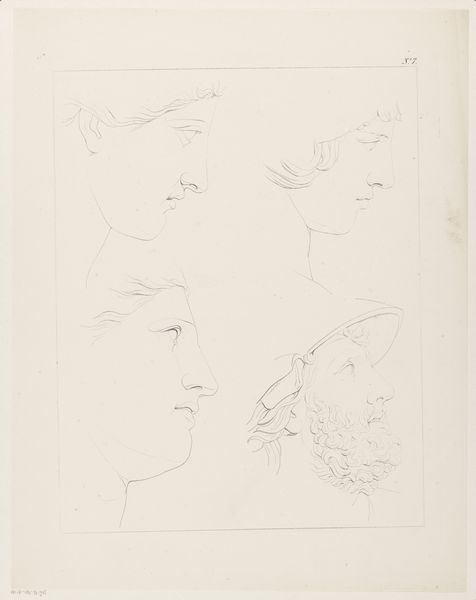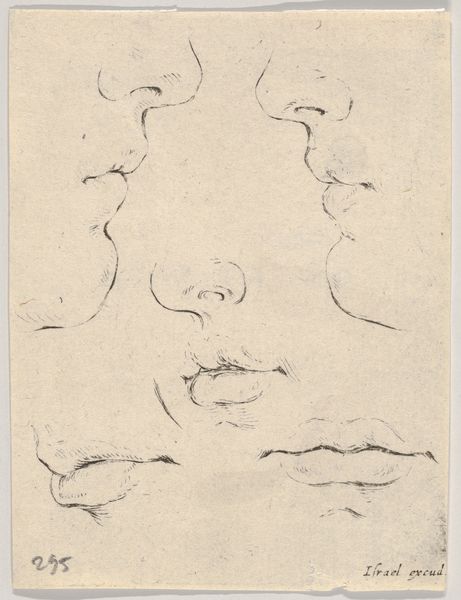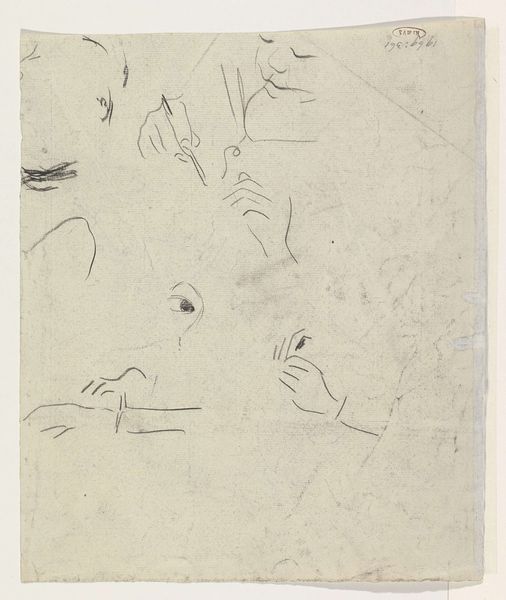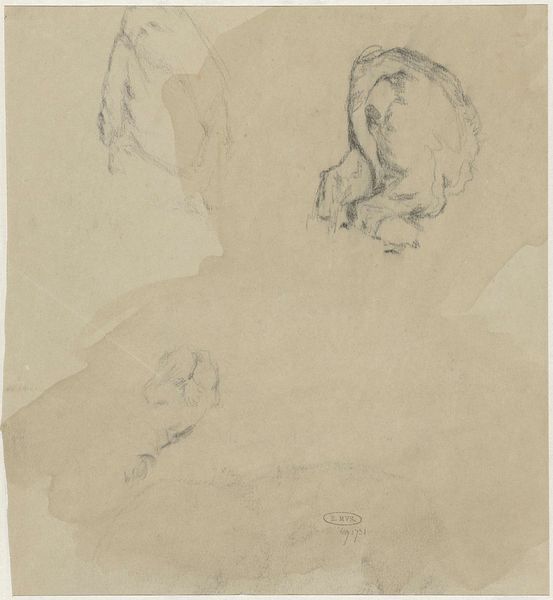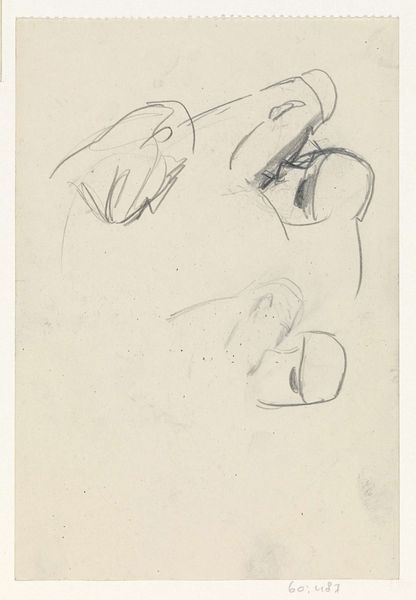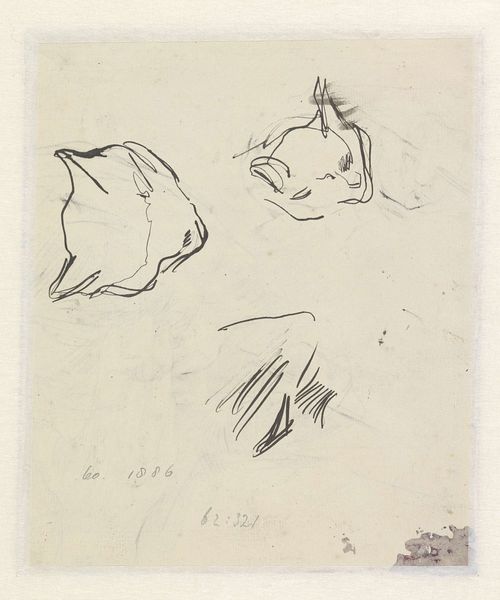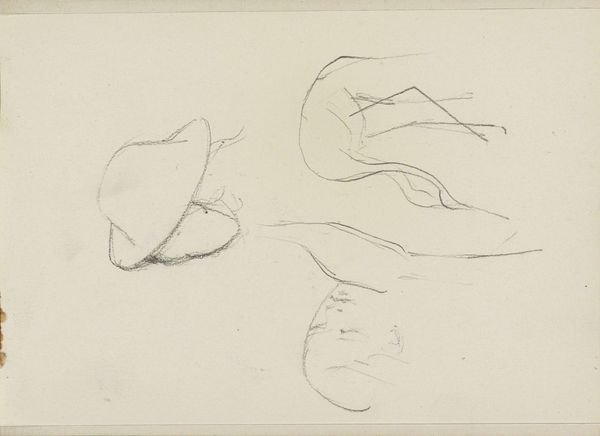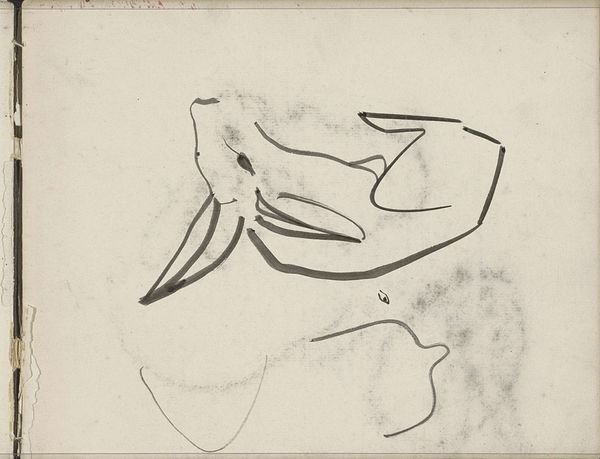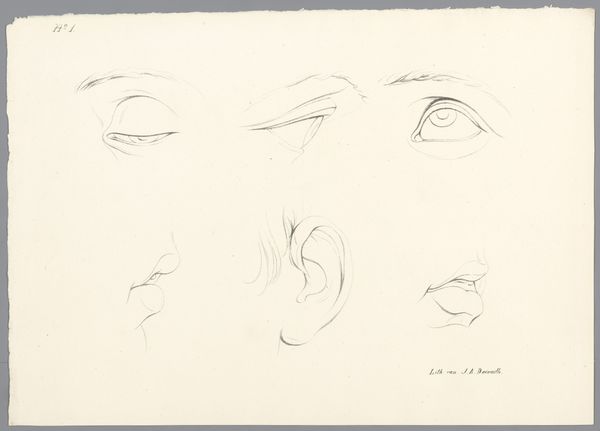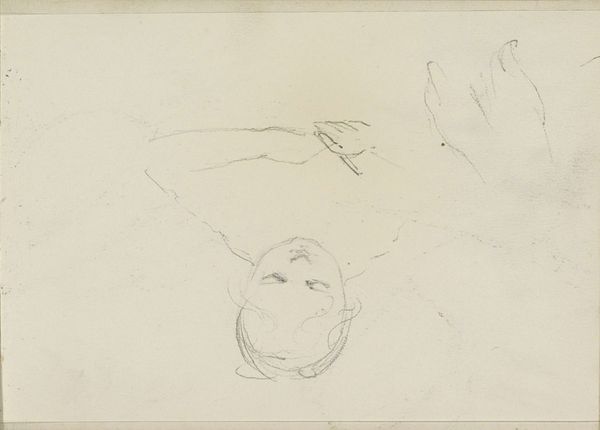
drawing, pencil
#
portrait
#
pencil drawn
#
drawing
#
pencil sketch
#
figuration
#
pencil drawing
#
pencil
#
academic-art
#
realism
Dimensions: height 540 mm, width 425 mm
Copyright: Rijks Museum: Open Domain
Curator: At first glance, it feels almost clinical. Dissected faces, robbed of identity. Editor: Perhaps intentionally so! Let's delve into this intriguing drawing housed here at the Rijksmuseum. Entitled "Studies of mouths, noses, and chins," it's a pencil work on paper crafted between 1820 and 1833 by Jean Augustin Daiwaille. A sheet of studies, meant for... what exactly? Curator: Most likely this served as a study sheet to train students on realism, the essence of capturing detail with stark lines and minimal emotion. Academic exercises focused on isolated features. It's like an anatomical drawing—except of the face. We can infer cultural expectations. Editor: How do you mean? It makes me think of a catalog. The meticulous depiction and isolation of features, I can't help but reflect how this can feed into phrenology. It also makes you aware of the lack of features: Where is the joy? Or any sort of individualism? How are images being used? What cultural role is at play when producing and teaching such studies? Curator: Right, a catalogue! It is the reduction to basic shapes. It shows us how, at the time, ideal beauty could be studied with a detached, "scientific" eye. The disembodied features remind me that a person consists of their collective components, much like our inner lives are constructed from fragmented memories, shaped by perception. This method aimed for the precision they hoped would create true, 'objective' portraits. Editor: True! And looking at these delicate lines, it is tempting to admire Daiwaille’s skill. It seems like it may echo ideas that were circling through Enlightenment era institutions about what visual analysis means in the larger context. Curator: Ultimately, Daiwaille captured how beauty and 'truth' could be achieved, through strict technical foundations; he mirrored the era’s deep, cultural, commitment to rigorous study as a mark of accomplishment. It can feel impersonal. Editor: Yes, I come away feeling a little chilled. The drawing invites us to confront the values of an era—revealing not only their artistic ideals but also their often unsettling ways of viewing humanity. Thanks for the context.
Comments
No comments
Be the first to comment and join the conversation on the ultimate creative platform.
